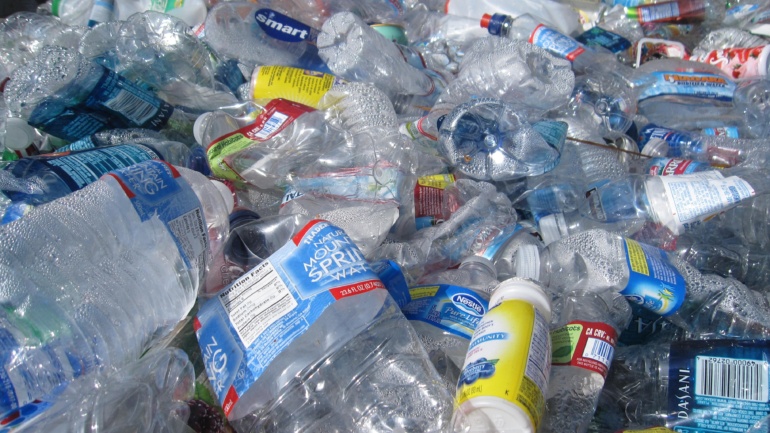By Rachel Porter, Publishing Project Lead for Save The Water™ | September 23, 2019
A new World Bank report reveals that the on-going world water crisis eliminates one third of global economic growth. The report focuses on two key contributors: nitrogen and salinity. While many studies of water quality look to developing countries and their struggles, the World Bank points out that the global water crisis spans the boundaries of wealth, affecting poor and wealthy counties alike.1
Nitrogen
The most common chemical contaminants in the world’s groundwater is Nitrogen. Nitrogen is an essential nutrient for both plant and animal growth, and farmers often add it to synthetic fertilizers in order to increase agricultural production. However, heavy rains can lead to runoff where excess fertilizer, and its supplemental nutrients are carried into nearby surface and groundwater.
A rising world population and increasing agricultural production only exacerbates this problem. Moreover as cities grow more dense, other sources, such as human waste and untreated wastewater, leak into the environment as well. The World Bank hypothesizes that “The world has likely [already] surpassed the safe planetary boundary for nitrogen.”1
Nitrogen and Human Health
These high nitrogen levels are detrimental to human health, particularly to young children. For example, when infants ingest nitrogen through drinking water, it decreases the blood’s ability to transport oxygen. Without enough oxygen, the brain and body can shut down, leading to what is commonly known as blue baby syndrome.
Beyond early life repercussions, nitrogen exposure in childhood also has “durable, long-term impacts that stretch well into adulthood.” Rigorous studies in India, Vietnam, and Africa consistently found that exposure in early life had a direct impact on height, a common and credible measure of long-term health, and therefore on over all lifetime well-being.
Moreover, high exposure at any age has also been linked to hypothyroidism, thyroid cancer, and chronic digestive illnesses.1
Nitrogen and Economics
Health and economic productivity are inextricably linked. For example, lower life expectancy diminishes the drive for adult job training. Prevalent disease in a country discourages tourism and the potential economic boost it brings. Recurring health issues hinder productivity and workforce development, just to name a few.2
The health impacts from nitrogen are no different. One study found that exposure in early childhood can lead to around a 9% loss of wages in adulthood.
However, nitrogen is an essential component of agricultural success. Every extra kilogram of nitrogen per 100 acres increases yields by 4 times. But at what cost?
Every additional milligram (or 1/1,000,000 of a kg) of nitrogen that runs off into water systems decreases adult earnings by up to 2%. When applied to entire communities or even countries, the monetary loss is exponential.1
Salt
Salt may seem harmless. We sprinkle it on our foods and enjoy a dip into the salty oceans along the coast. But as human land use expands and industry rises, salts are creeping into fresh and drinking water sources. And causing major economic impacts.
Increasing salinity results from a variety of human activities. Markedly, salt used to de-ice surfaces in winter runs off into surface and ground waters. Burning fossil fuels accumulate pollutants in the atmosphere where they fall to earth as acid rain. Sujay Kaushal, a biogeochemist at the University of Maryland, explains, “Decades of acid rain have dissolved not just portions of rock and soils but buildings and roads as well—all of which have added various salts to the water.”3
Moreover, mining, as well as oil and gas extraction, pump out saline groundwater, and agricultural irrigation can carry salts from the surface into nearby streams.”3
New research finds that “At least a third of the rivers and streams in the country have gotten saltier in the past 25 years. And by 2100, more than half of them may contain at least 50 percent more salt than they used to.”3
Salt and Agricultural Production
Increasing salinity in freshwater has serious consequences, particularly on agriculture. In 2013, water salinity levels caused the loss of enough food annually to feed more than 170 million people every day. That is enough to feed the population of Bangladesh for a year.1
Agriculture is a key part of the economy. In 2017, for example, agriculture contributed over a trillion dollars to U.S. gross domestic product (GDP) and constituted 11% of all U.S. employment.4 It is easy to see how changes in the agricultural sector are felt throughout the global economy. They affect food prices, income, and international trade.5
As the world population rises and agricultural production becomes more and more critical, water scarcity is often thought to be a more serious threat then water quality. However, by 2050 agricultural losses from salinity could be more than double those due to drought.1
Salt and Infrastructure
Moreover, salt can have impacts beyond the agricultural sector. Salinity can also cause other events to be set in motion that lead to human health impacts and infrastructure damage.
For example, in 2014, Flint, Michigan began to use the Flint River as its primary water source. The high salt content of the river stripped lead from the city’s aging pipes and into the drinking water, poisoning the people of Flint. In Washington, DC, salient water pulled manganese from old pipes, exposing communities to potential nervous system damage.
When events like this take place, replacing the infrastructure can cost millions of dollars. And the subsequent illnesses impact the economy for years.1
Economics and Water Quality
Nitrogen and salts are only two among a wide range of other contaminants of concern, ranging from micro-plastics and pharmaceuticals, to arsenic and fluoride. Combined, they create a global crises dripping from pipes around the world. And this water quality crisis does not discriminate based on wealth.
Wealth’s Effect on Water Quality
While water quality is often seen as an outcome of poverty or only affecting developing nations, data provide a different story. Developing nations and wealthy nations may have different water quality issues, but the threat still remains.
In low and middle income nations, water quality tends to be significantly linked to sanitation and infrastructure. Over 1 billion people around the world do not have access to basic sanitation facilities, such as toilets. In other cases, water treatment facilities can be expensive and improbable for poor communities. Studies show that without access to basic sanitation, a wide range of health issues emerge. These range from chronic intestinal disease, to worm and parasite infections. The World Bank reports that sanitation is the “key determinant” in predicting children’s height, a proxy of overall health, and accounts for about half of all variations in children’s height globally.
As countries develop, economies grow, and infrastructure improves. Likewise the risks of poor sanitation decrease. However, with growing economies also comes increased production, city density, and pollution. “It has been observed,” explains the World bank, “that traditionally as levels of income increase, pollutants of poverty begin to disappear and are replaced with pollutants of growing prosperity and emerging pollutants.”
These include new chemicals that we know very little about. The United States alone “receives notices for the release of more than 1,000 new chemicals into the environment each year—or around three new chemicals per day.”1
Its is impractical to expect that each new chemical be studied for their health effects. Nor that policy could be put in place for each one of these new contaminants. So, out they flow into the world’s waters, without an understanding as to their effects or impacts.1
Moving Forward
With so many components, it can be hard to place a number on the influence that water quality has on the economy. However, the World Bank looks to biological oxygen demand, BOD, as an indicator of upstream water quality’s impact on downstream economic activity. What they found was that when BOD levels are over 8 mg/L, the lower limit of pollution, about a third of economic growth is lost downstream. Higher levels of pollution can decrease growth by nearly half.
Quantifying and understanding water quality impacts in this way is an important first step in moving forward. The World Bank lays out three important areas of improvement to the world water crisis and its subsequent economic concerns: 1) Information, 2) Prevention, and 3) Investment.1
- Information
- Establish surface and ground water monitoring systems
- Publish data online, in schools, in health care centers, etc.
- Prevention
- Create laws, regulations, and incentives (such as taxes and permits) that encourage the reduction of water pollution
- Place the full cost of water contamination on the polluters
- Investment
- Finance water treatment through both public and private sector financing and tariffs levied on polluters
- Treat 100% of drinking water
- Manage 100% of wastewater
References
- Richard Damania, et al. 2019. “Quality Unknown: The Invisible Water Crisis.” The World Bank Group. https://openknowledge.worldbank.org/bitstream/handle/10986/32245/9781464814594.pdf?sequence=3&isAllowed=y
- Julio Frenk. May, 2004. “Health and the economy: A vital relationship.” OECD Observer. http://oecdobserver.org/news/archivestory.php/aid/1241/Health_and_the_economy:_A_vital_relationship_.html
- Tim Vernimmen. December 6, 2018. “Freshwater Is Getting Saltier, Threatening People and Wildlife.” Scientific American. https://www.scientificamerican.com/article/freshwater-is-getting-saltier-threatening-people-and-wildlife/
- Keith R. Sherony, Glenn J. Knowles, and Roy Boyd. December 1990. “The Economic Impact of Crop Losses: A Computable General Equilibrium Approach.” Semantic Scholar. https://pdfs.semanticscholar.org/8732/9d7d3aff4f3ffa3cc64021ee157e126c24d9.pdf
- USDA. August 20, 2019. “Ag and Food Sectors and the Economy.” https://www.ers.usda.gov/data-products/ag-and-food-statistics-charting-the-essentials/ag-and-food-sectors-and-the-economy/





